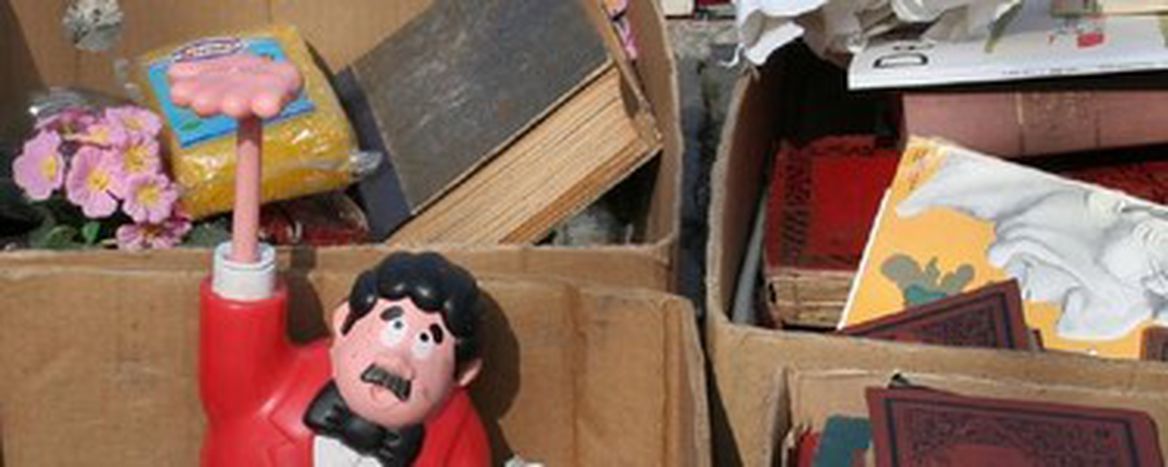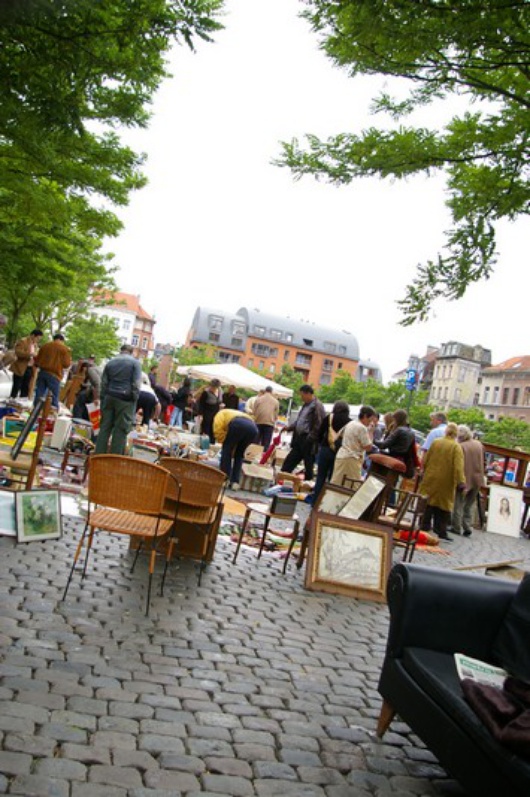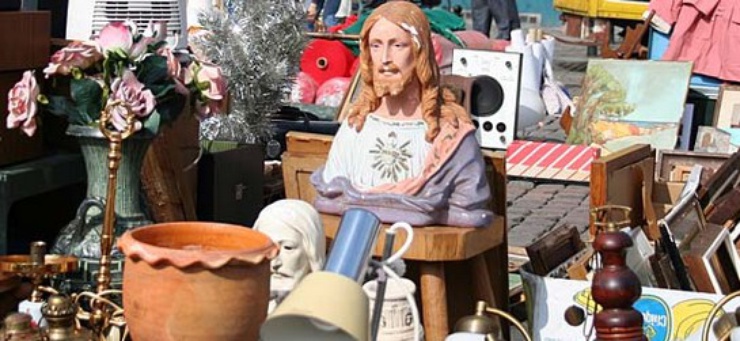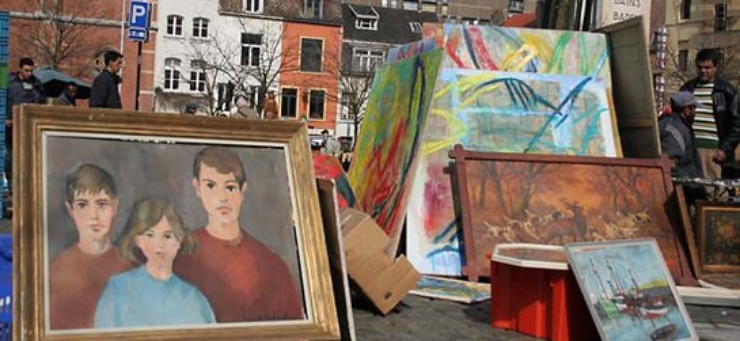
Brussels flea market: bargains abound
Published on
Translation by:
Sarah TruesdaleMeet people, get great bargains and put familiar objects which you have grown tired of back into circulation
A stone’s throw from the heart of Europe’s bureaucratic centre, the Brussels flea-market remains the perfect place to buy and sell all sorts of things, from the rarest antiquity to the most kitsch artefacts. Jeu de Balle Square and the area surrounding Blaes Road is the ideal place to compare the prices and the quality of articles which the storekeepers and the antique dealers in the area try to sell. Moreover, they do not hesitate, should the need arise to become suppliers and advisors while they are at it.
Profiting from trinkets
 From fully complete sixteenth century cutlery collections (not even the smallest butter knife is missing!) to watches from all eras; from porcelain boxes sitting next to Crystal Radio sets from the beginning of the twentieth century, to remotes ready to reconnect you with your favourite television programmes to start-of-the-art analogue Polaroid cameras: everything is for sale. Nothing is missing from this inventory, nor from the stalls. In this market, everything that is thrown away resurfaces on the other side and becomes potentially profitable.
From fully complete sixteenth century cutlery collections (not even the smallest butter knife is missing!) to watches from all eras; from porcelain boxes sitting next to Crystal Radio sets from the beginning of the twentieth century, to remotes ready to reconnect you with your favourite television programmes to start-of-the-art analogue Polaroid cameras: everything is for sale. Nothing is missing from this inventory, nor from the stalls. In this market, everything that is thrown away resurfaces on the other side and becomes potentially profitable.
The spirit of free enterprise here takes on the charming face of discreet exchange. This avatar of an authentic Batavian culture is alive and well, with an atmosphere witness to a moving population. Its only noble, sine qua non condition is to have the freedom of the city on this street. So, twice a year, two vast collections of possessions extend from one end of the capital to the other, full of things which don’t interest anyone, abandoned either via moving home, spring cleans or simply trying to earn a couple of euros more.
Marketing and persuasion

A vendor in the Jeu de balle Square, originally from Tunisia, says that at this time of year a complete lot, no matter what it is, is still the best ticket, a real trump card in terms of marketing and persuasion for the merchant. Having worked there for six months, the young vendor recognises, despite everything, that the competition is tough between the veterans and the beginners like him.
As a witness to the co-existence of two forms of exchange, the profile of the average merchant who strolls about the edges of the Jeu de Balle Square is entirely different from the experienced collector who frequents the distinguished antique boutiques. Provided he goes to the trouble, the first arrival can find himself a shopper or buyer in the market, as long as he has something to sell or to deal with.

Swiss university student Patrice embodies a typical example of this consumerist, nomadic ethnic group. He has just unearthed a lamp from the seventies for the outrageous sum of twenty euros (£16), which, at cost price, is three times cheaper. On the other hand, Hélène, a French civil servant, does not know which saint to pray to, but without any preconceived ideas, has stopped at number 25 rue Blaes, and has modestly acquired a first draft of Tintin in the Congo, signed by its author Hergé in 1931 for the price of 680 euros (£541).

Defending the fact that they accept things which come from the rubbish bin, many of the antique dealers who manage shops in Passage 25 recognise that they have acquired certain items thanks to the information obtained from wandering merchants from the flea market! Nevertheless, these specialists and experts say that rare and precious objects displayed in their windows have previously undergone delicate and painstaking restoration before being shown to their clients. Which justifies their prices. With power comes responsibility!
Translated from Un desecho de gran provecho



